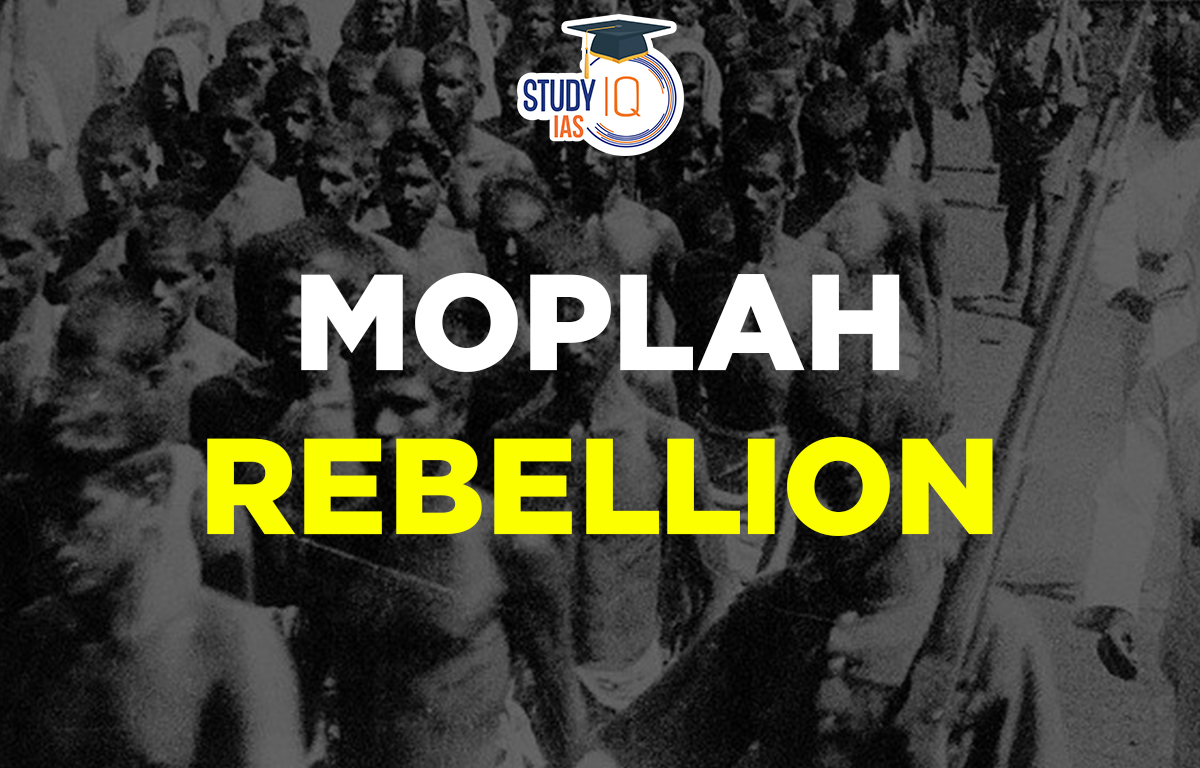Table of Contents
Moplah Rebellion
The Moplah Rebellion is a crucial topic on the history curriculum. The Moplah uprising in Indian history is linked to the invasion of Muslims from the West in the 7th century. There, the Muslims were given licence to trade and establish themselves. They got wedded to the locals’ daughters. As a result, they were given the name Moplahs, which in Malayalam means “son-in-law.” The 1921 Moplah uprising was a descendant of the Khilafat movement. This article has all the details related to Moplah Rebellion for UPSC Exam preparations.
Read More: Chuar Uprising
Moplah Rebellion History
Kerala was invaded by Muslims from the West around the year 7 AD. They had travelled by way of the Persian Sea to get there. The local authorities at that time assisted them by granting them approval to lead the trades and settle there. They were referred to as “Moplah” (literally, “son-in-law”) and they married the girls of the local civilians
In Kerala, they used to cultivate the soil. The land was previously owned by the Jenmis, who granted the lands to other people for agricultural reasons. The affluent Hindus were known to as Jenmis. The fields were primarily divided into three sections according to the cultivator. The cultivator was categorised along with the field. Additionally, the Moplahs served as farmers for Jenmis in these fields.
Numerous Hindus fled the country after Hyder Ali’s invasion in order to avoid the oppression, and forced conversions took place as a result. The Moplah Muslims were given permission to possess the property parcels. British people took over the country after the Tipu Sultan was killed. The Jenmis received new ownership rights from the Brits. Unlike the earlier situation, they gained total power and control over the lands.
Moplah’s Muslim tenants had to cope with rising rents and hardships. Following this time, there were a series of riots that resulted in the deaths of British citizens and landlords who were in positions of authority. The Moplah Muslims used the Khilafat Non-Cooperation Movement as a chance to showcase the hardships they had experienced under oppression.
Read More: Ramosi Uprising
Moplah Rebellion Leaders
One of the key figures in the beginning of the Moplah Rebellion was Variyamkunnath Kunjahammed Haji. The leaders of the Moplah uprising might have connected the injustices to feelings of Islamophobia. Haji came from a household that rejected social conventions.
Aside from creating fears, the collapse of the Ottoman Empire also sparked Malabar rebellions. Attacks on Hindu landowners, British officials, and Muslims who supported them were headed by him. According to the famous author C. Gopalan Nair’s book, Haji was instrumental in the Mappila uprisings.
Read More: Kuka Movement
Moplah Rebellion Impact
One of the key figures in the beginning of the Moplah rebellions was Variyamkunnath Kunjahammed Haji. The leaders of the Moplah uprising might have connected the injustices to feelings of Islamophobia. Haji came from a household that rejected social conventions.
Aside from creating fears, the collapse of the Ottoman Empire also sparked Malabar rebellions. Attacks on Hindu landowners, British officials, and Muslims who supported them were headed by him. According to the famous author C. Gopalan Nair’s book, Haji was instrumental in the Mappila uprisings.
Read More: Munda Rebellion
Moplah Rebellion UPSC
The Moplah rebellion’s consequences must be thoroughly and in-depth understood by the candidates. It is anticipated that this section’s topics will be covered in the examination. Candidates’ foundations will be strengthened and their methodical strategy will be cultivated with the aid of a thorough study of the questions from previous years’ exams. The thorough article will also help the candidates hone their skills and increase their ability to answer the queries within the allotted time.
Read More: Santhal Rebellion


 Nagari Pracharini Sabha Revival: Backgro...
Nagari Pracharini Sabha Revival: Backgro...
 Ryotwari System in India, Features, Impa...
Ryotwari System in India, Features, Impa...
 Battle of Plassey, History, Causes, Impa...
Battle of Plassey, History, Causes, Impa...





















